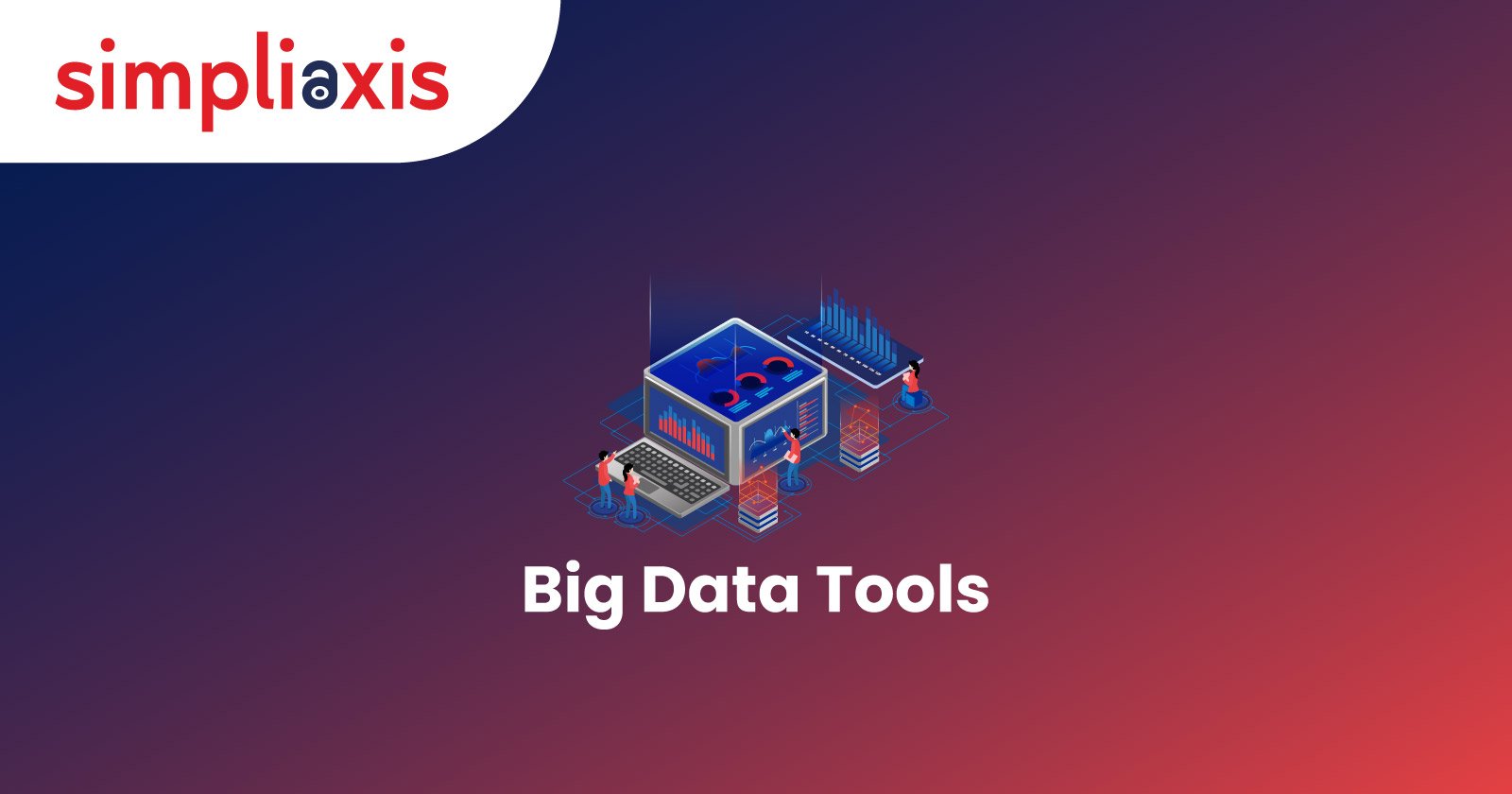The phrase "Big Data" often appears in technological contexts. Since there is so much information being generated throughout the globe, Big Data Analytics tools do have a great deal of potential. As a result, organizations must handle, collect, display, and analyze vast volumes of usable information.
A slew of specialized Big Data tools list of computing instruments and organizational strategies have arisen to tackle this burden because regular data resources aren't meant to address this degree of complexities and density.
To set their information to utilize, organizations may utilize made-to-order Big Data Tools to uncover fresh company prospects and build innovative business concepts. The perspective and significance of the original information are provided by such products, which differ from usual Big Data tools and technologies. Instead of just storing individual records, Big Data Analytics tools and technologies help organizations to understand the bigger landscape that information gives.
Apache Hadoop
The goal of Apache Hadoop has been to make large information easier to use and to address some of the most pressing difficulties that came with it. It has been getting impossible to keep track of the one billion web pages of material that were being generated by the online medium on a regular scale. A better paradigm for analyzing information called MapReduce was developed by Google as a ground-breaking step. The Nutch scour engines initiative was enabled by an expansive technology architecture developed by Doug Cutting and Mike Cafarella in response to a white paper issued by Google on Map Reducing. As a result of the initial test scenario, Hadoop's memory architecture was simplified significantly.
Big Data processing relies heavily on Apache Hadoop, which is the foremost widely used model in the industry. One of Hadoop's greatest advantages is its capacity to scale. It seamlessly scales from a solitary point to tens of multiple nodes sans a hitch.
Apache Spark
As a computational software, Apache Spark has the ability to swiftly conduct handling jobs on extremely massive data and could also spread information analysis activities over several machines, whether on their own or in cooperation with other decentralized software technologies. To succeed in the realms of information and deep intelligence, these skills are essential. Through an easy-to-use API, Spark effectively lifts a few of the coding weights further off of programmers when it comes to remote computation and large data handling. Through an easy-to-use API, Spark effectively lifts a few of the coding weights further off of programmers when it comes to remote computation and massive dataset handling.
This large open-source information parallel computing platform has grown from modest origins as a research project in the year 2009. As a result, Spark is hosted in a number of methods and enables a range of computing technologies, including Java, Scala, Python, and R. Every one of the big technology businesses, as well as telecoms and entertainment businesses, utilize it.
Apache Kafka
Apache Kafka is a decentralized publication chat feature and a strong long queue that could manage a large amount of information and allows you to transfer information across endpoints. Both offline and online data processing methods are compatible with Kafka. Posts from Kafka are stored on disc and duplicated throughout the network to avoid data corruption. Kafka is developed on the synchronization tool ZooKeeper. It interacts nicely using Apache Storm and Sparks for flowing information processing in actual time.
Kafka is a system designed to manage all real-time information sources. Kafka enables the transmission of messages with minimal latency and guarantees error resilience in the case of system faults. It is capable of accommodating a large number of various customers. Kafka is extremely quick, achieving 2 million reads every second. Kafka maintains all content to disc, which implies that all updates are directed to the OS's webpage caches (RAM). This enables the transmission of information from page caches to a connection port very quickly.
Zoho Analytics
For every firm, information handling and monitoring are quite challenging jobs. However, the development of findings and the evaluation of relevant retail and promotional efforts rely heavily on the administration and treatment of original information. To turn your information into useful insights and visualizations, use Zoho Analytics. Scorecards and information visualizations may be easily constructed using Zoho Analytics, popularly called Zoho Reports.
Analytical tools like Zoho Analytics allow companies to explore and visualize complex information in new ways and uncover previously unrecognized relationships between variables. Data scientists and IT support are no longer required, thanks to the database software, which analyses and interprets all of the financial property.
You may interact with Zoho Analytics collaborators to compress massive information, execute numerous analytical operations, mix that content, and show the findings in pictorial ways to unearth the discoveries that are hidden within. C loud-deployment options are available for Zoho Analytics, which helps organizations achieve data-informed choices and is easy to use.
RapidMiner
Using RapidMiner, data scientists may do forecasting, create novel processes for extraction, and much more.
It is possible to create dataflow applications using RapidMiner Streams sans writing any code. Apache Storm groups may be used to provide streaming analyses for system assessment and information merging on streamed information. RapidMiner Radoop is a method for analyzing large amounts of information, especially making forecasts and performing analyses. Big Data ETL may be visualized, predictively modeled, ad hoc reports can be generated, and insights can be applied to the material.
Use a drag-and-drop paradigm to build analytic procedures in RapidMiner Studio. Because of its public APIs, one may use it with your own techniques. Using RapidMiner Server, users may run operations on your company's servers from anywhere, on any device. This tool allows you to plan and execute analyses, as well as see the outcomes immediately.
RapidMiner is powerful and capable of providing insights premised on real data processing parameters. This gives users complete command over the type and source of your information, allowing users to change it in whatever manner they see fit. As a consequence, predictive analytics may provide ideal large datasets.
Lumify
Lumify, a free access Big Data research, and mapping instrument, may be the device of preference for people sifting through the Panama Papers' 11 million-plus documents pile. Al Qaeda is featured prominently on the Lumify program's homepage as a way to demonstrate the device's ability to track down terrorists. Lumify is designed to help investigators discover links and patterns in information that they are unclear about. SAP's increased HANA in-memory storage and calculation unit have lately been linked with it. If you're working with other scientists on a project, Lumify can help you get your data into a shared workspace.
Also, Check:
Conclusion
Nowadays, Big Data is having a significant influence on almost all businesses. There is a consistent framework for Big Data analytics tools and technology that we have outlined in this study. Data production, collection, and retention, information handling, information retrieval, and interpretation of databases are all part of the Big Data framework. Afterward, we examined a variety of data-analytic techniques. Here, we've looked at several data collecting methods, NoSQL storage systems, and coding approaches. If an operation is being created, then these resources, data centers, and programming must be chosen in accordance with those needs.
Big Data is a term used to describe data that is enormous, diverse, and fast-moving. Existing approaches are unable to handle Big Data characteristics. The intricacy of Big Data necessitates the use of modern analytical techniques and technology. It is possible to extract relevant data from data using analytical methods and technology, and this data may then be utilized to improve prospective predictions and judgment choices. Implemented and exploited correctly, Big Data Analytics has the potential to provide a foundation for scientific growth. Simpliaxis offers a comprehensive Big Data Analytics training course, emphasizing the pivotal role of Big Data Analytics in driving scientific progress.






















